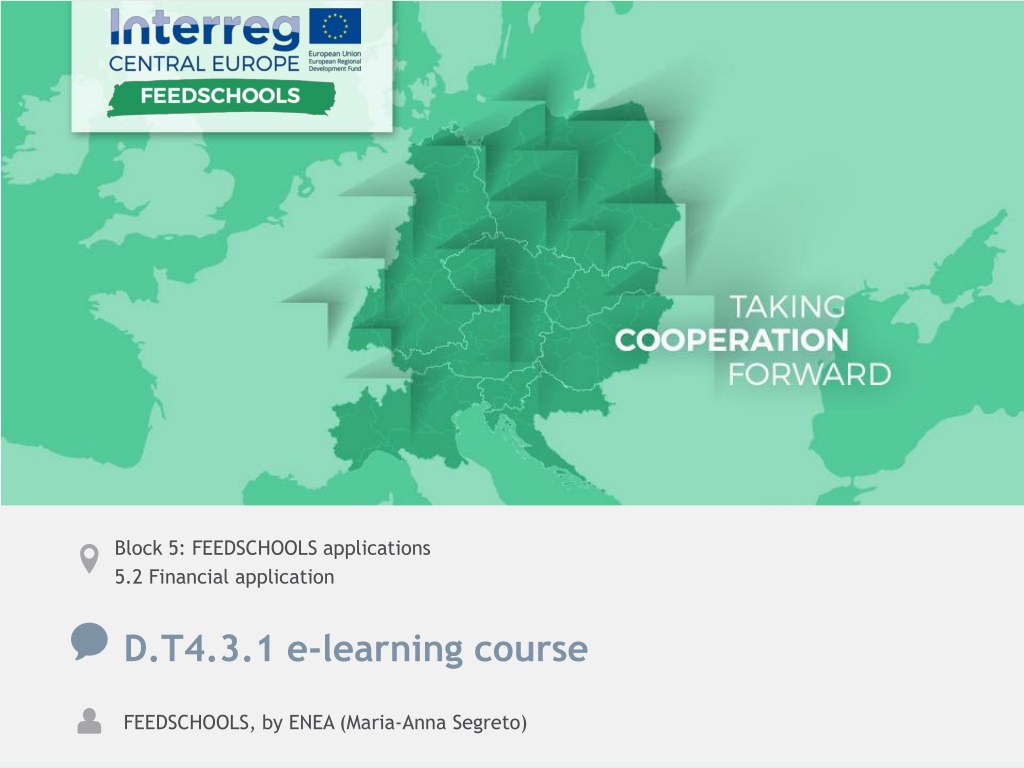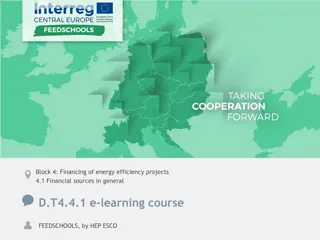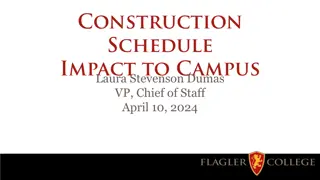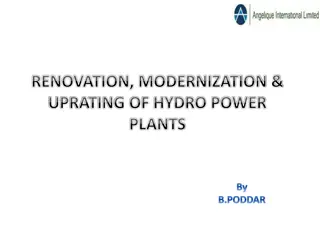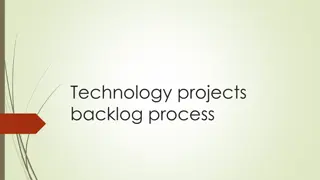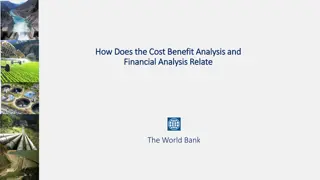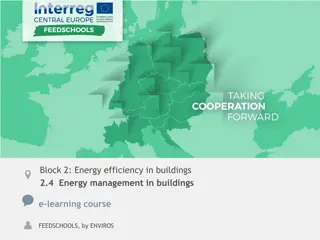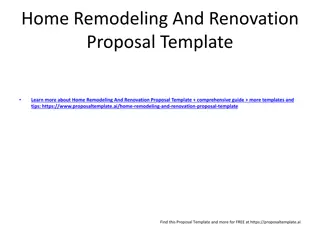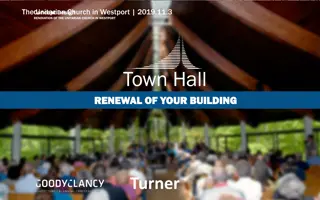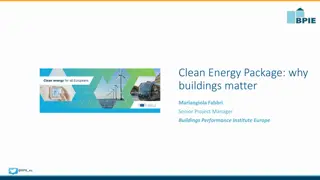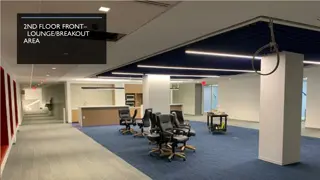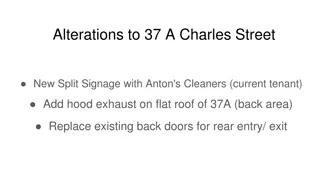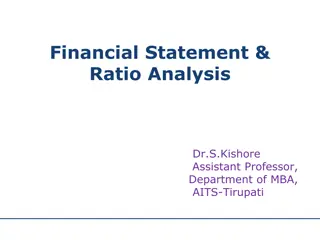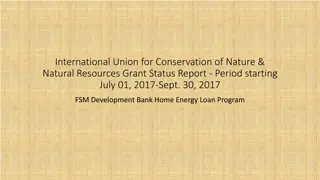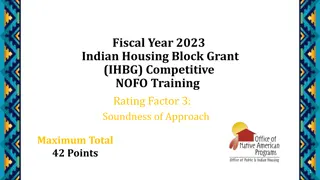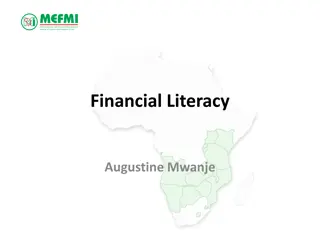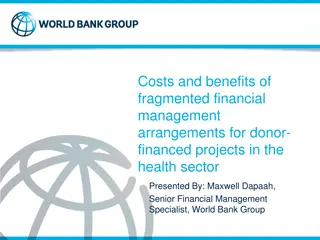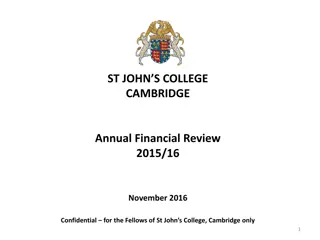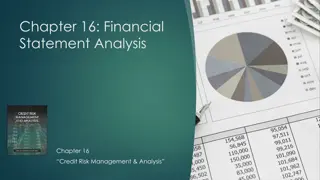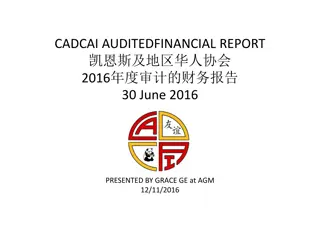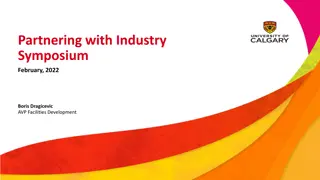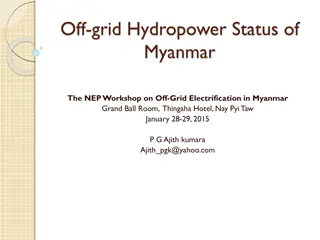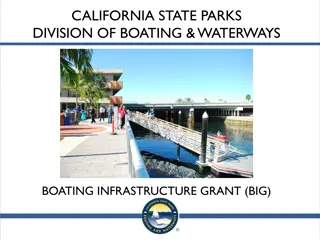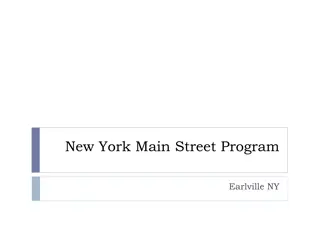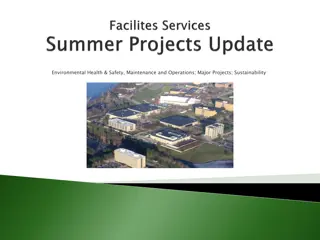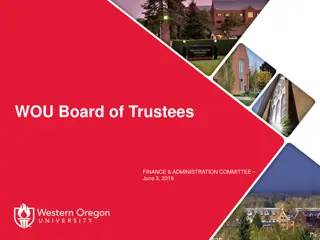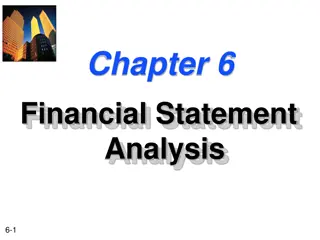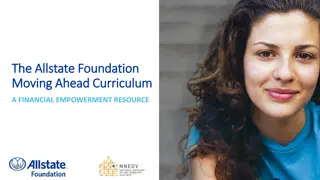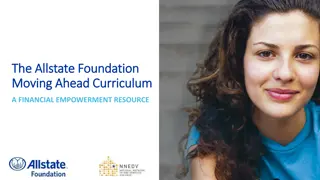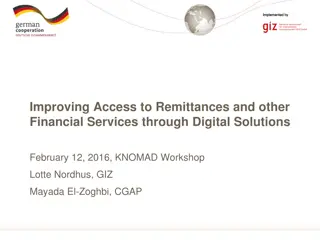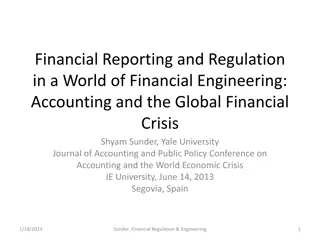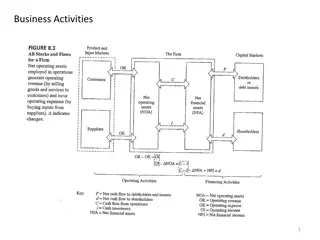Understanding Financial Analysis in NZEB Renovation Projects
The FEEDSCHOOLS project focuses on addressing challenges in NZEB renovation through a holistic approach considering financial, environmental, and energy aspects. It emphasizes the importance of financial analysis in ensuring economic feasibility for energy refurbishment projects. The Italian financing scheme for school buildings is discussed as a strategic approach to promote energy efficiency and achieve nearly zero energy buildings. Member States are required to consider cost optimality and minimum energy performance requirements, providing a comparative methodology for determining cost-effectiveness in building renovations.
Download Presentation

Please find below an Image/Link to download the presentation.
The content on the website is provided AS IS for your information and personal use only. It may not be sold, licensed, or shared on other websites without obtaining consent from the author. Download presentation by click this link. If you encounter any issues during the download, it is possible that the publisher has removed the file from their server.
E N D
Presentation Transcript
Block 5: FEEDSCHOOLS applications 5.2 Financial application D.T4.3.1 e-learning course 1 TAKING COOPERATION FORWARD FEEDSCHOOLS, by ENEA (Maria-Anna Segreto)
BLOCK 5: FEEDSCHOOLS APPLICATIONS 5.2 FINANCIAL APPLICATION Learning Objective: The FEEDSCHOOLS project address the identified challenges with an holistic approach which takes in account the financial, environmental and energy aspects of NZEB renovation of public buildings. The project also support the analysis and application of financial schemes applicable such as the energy performance contracts but also other innovative mechanisms. The purpose of this block is to make people understand what the added value of financial analysis is. In fact, an energy refurbishment project cannot be considered complete and effective without a financial analysis that gives information on the economic feasibility. 5.1.2 FEEDSCHOOLS Financial App 5.1.1 Financial Analysis (link) (link) 2 TAKING COOPERATION FORWARD
BLOCK 5: FEEDSCHOOLS APPLICATIONS 4.1 FINANCIAL APPLICATION 5.1.1 Financial Analysis 5.1.1obiective This unit aims to give an overview of the Financial Analysis for energy improvement actions. 3 TAKING COOPERATION FORWARD
ITALIAN FINANCING SCHEME FOR SCHOOL BUILDINGS The recast of the energy performance of buildings Directive (EPBD) describes a comparative methodological framework to promote energy efficiency and establish minimum energy performance requirements in buildings at the lowest costs. The aim of the cost-optimal methodology is to foster the achievement of nearly zero energy buildings (nZEBs), the new target for all new buildings by 2020, characterized by a high performance with a low energy requirement almost covered by renewable sources Improving and investing in energy renovation of the EU building stock is a key aspect not only for the derived savings and CO2 emissions reduction, but also for the potential growth and employment that this sector can provide. 4 TAKING COOPERATION FORWARD
ITALIAN FINANCING SCHEME FOR SCHOOL BUILDINGS Improving and investing in energy renovation of the EU building stock is a key aspect not only for the derived savings and CO2 emissions reduction, but also for the potential growth and employment that this sector can provide. According to the EPBD, Member States have to consider cost- optimality to establish minimum energy performance requirements in buildings at the lowest costs. A methodology is provided by Delegated Regulation No. 244/2012 and its Guidelines to derive cost-effectiveness from a technical and economic perspective. The methodology foresees a comparison in terms of costs and energy performance of construction alternatives to be taken into account both in new and existing buildings undergoing major or non-major renovation. 5 TAKING COOPERATION FORWARD
ITALIAN FINANCING SCHEME FOR SCHOOL BUILDINGS The cost optimal is influenced by different factors, such as building typology, variants, discount rate, energy price, and cost data. As a heterogeneous situation characterizes Member State in relation to cost- optimal levels mainly depending on building types and climates, there is the need to develop a common methodology: we can do this using universally recognized economic indicators. The FEEDSCHOOL project aim is the identification of the strategies and optimal solutions for the renovation of existing school buildings. The methodology presented helps the decisional and management process of the designers who want to guarantee comfort and cost-optimal solutions in school retrofitting, being a useful tool for municipalities at the same time. It shows how providing a reduction of energy consumption and greenhouse gas emission in a cost-effective way during building s lifecycle. 6 TAKING COOPERATION FORWARD
SELF ASSESSMENT TEST The aim of the cost-optimal methodology is: 1.To spend less 2.to foster the achievement of nearly zero energy buildings 3.To obtain incentives A methodology for cost optimal analysis is provided by: 1.Delegated Regulation No. 422/2012 2.Delegated Regulation No. 242/2012 3.Delegated Regulation No. 244/2012 The FEEDSCHOOL project aim about cost optimal analysis is: 1.the identification of the strategies and optimal solutions for the renovation of existing school buildings 2.the identification of the strategies and optimal solutions for the renovation of new school buildings 3.the identification of the strategies and optimal solutions for the renovation of both existing and new school buildings 7 TAKING COOPERATION FORWARD
BLOCK 5: FEEDSCHOOLS APPLICATIONS 4.1 FINANCIAL APPLICATION 5.1.2 FEEDSCHOOLS Financial App 5.1.2 obiective This unit aims to give an overview of the Financial App included in the FEEDSCHOOLS Web T ool 8 TAKING COOPERATION FORWARD
FEEDSCHOOLS FINANCIAL APP As any activity, energy renovation has its related costs, which vary according to the refurbishment depth (number and complexity of implemented energy efficiency measures). Therefore, any decision on energy renovation of a building must carefully evaluate these costs and ensure financing, in order to reap the benefits after the implementation. The most usually utilized financing models include: own funding, loan financing, ESCO model (Energy Performance Contracting EPC), public-private partnership (PPP), combination of the before mentioned models grant schemes or some There is no universally best solution, but for each particular situation (country, region, building) an optimal solution should be tailor-made. 9 TAKING COOPERATION FORWARD
FEEDSCHOOLS FINANCIAL APP Usually, especially in the public sector, it is possible to combine a maximum of two different funds, to make the refurbishment operation more feasible. The activities of FEEDSCHOOLS project presented, in different report, available financing models in each participating country and, based on the Project partners feedback, provided a comparative analysis of availability, current usage and planned usage of different financing models. The results of this in-depth analysis, performed by HEP Esco (Croatian project partner), were used to introduce a financial app within the web tool. 10 TAKING COOPERATION FORWARD
FEEDSCHOOLS FINANCIAL APP The feasibility of Energy Efficiency refurbishments depends on both technical potentials of applied measures in terms of energy savings and on the conditions of financing mechanisms available for their support. Within FEEDSCHOOLS project, a calculation model for school buildings has been developed aiming at analyzing different available financing models and deciding on the optimal model. 11 TAKING COOPERATION FORWARD
FEEDSCHOOLS FINANCIAL APP Calculation parameters (7), like available grant rates or loan interest rates are obtained through feedback of Project partners and are presented in Table below: Criteria/ Model Interest rate Discount rate The indicators in the table vary according to the country and must be carefully evaluated in order to obtain valid results. Life cycle of EE renovation (years) Administrative, legal and architect cost Other bank cost ESCO cost PPP cost 12 TAKING COOPERATION FORWARD
FEEDSCHOOLS FINANCIAL APP The analysis included 5 models: Analysis Budget financing Loan (credit) financing ESCO financing PPP financing Combination of ESCO and subsidy (with 95% subsidy rate) The Financial App also determine the subsidy rate needed to break even. The model was validated through the results of performed energy audits for each school, for each country, in order to ensure the correctness of the results. 13 TAKING COOPERATION FORWARD
FEEDSCHOOLS FINANCIAL APP To apply the financial module, user add information about school, investment, saving and Country. The user can manually enter the data or, if he used the Renovation Option Module, he can import them automatically. Automatically rates are calculated. If the user deems it useful, he can manually change the preset rate values. 14 TAKING COOPERATION FORWARD
FEEDSCHOOLS FINANCIAL APP Then the calculation is returned. An indicator (green, yellow or red face) is also inserted next to the result: it indicates whether the final solution is feasible, almost feasible or not feasible 15 TAKING COOPERATION FORWARD
SELF ASSESSMENT TEST Is there a solution universally considered the best in analyzing optimal costs? 1.Yes, the one with the least payback time 2.Yes, the one with the least cost 3.No, because for each particular situation (country, region, building) an optimal solution should be tailor-made. The feasibility of Energy Efficiency refurbishments depends: 1.Only on technical potentials of applied measures 2.Only on the conditions of financing mechanisms available 3.On both technical potentials of applied measures and on the conditions of financing mechanisms available How many economic indicators are calculated by the FEEDSCHOOLS financial app? 1.3 2.7 3.5 16 TAKING COOPERATION FORWARD
SELF ASSESSMENT TEST How many models are analyzed with the FEEDSCHOOLS financial app? 1.3 2.7 3.5 The FEEDSCHOOL financial model was validated through: 1.Stakeholder suggestion 2.Partner feedbacks 3.Performed energy audits 17 TAKING COOPERATION FORWARD
Maria-Anna Segreto (author and tutor) Researcher and Head of SEI Laboratory of ENEA www.enea.it/en/ mariaanna.segreto@enea.it https://www.facebook.com/eneapaginaufficiale/ https://twitter.com/ENEAOfficial https://www.linkedin.com/company/enea_2 18 TAKING COOPERATION FORWARD
